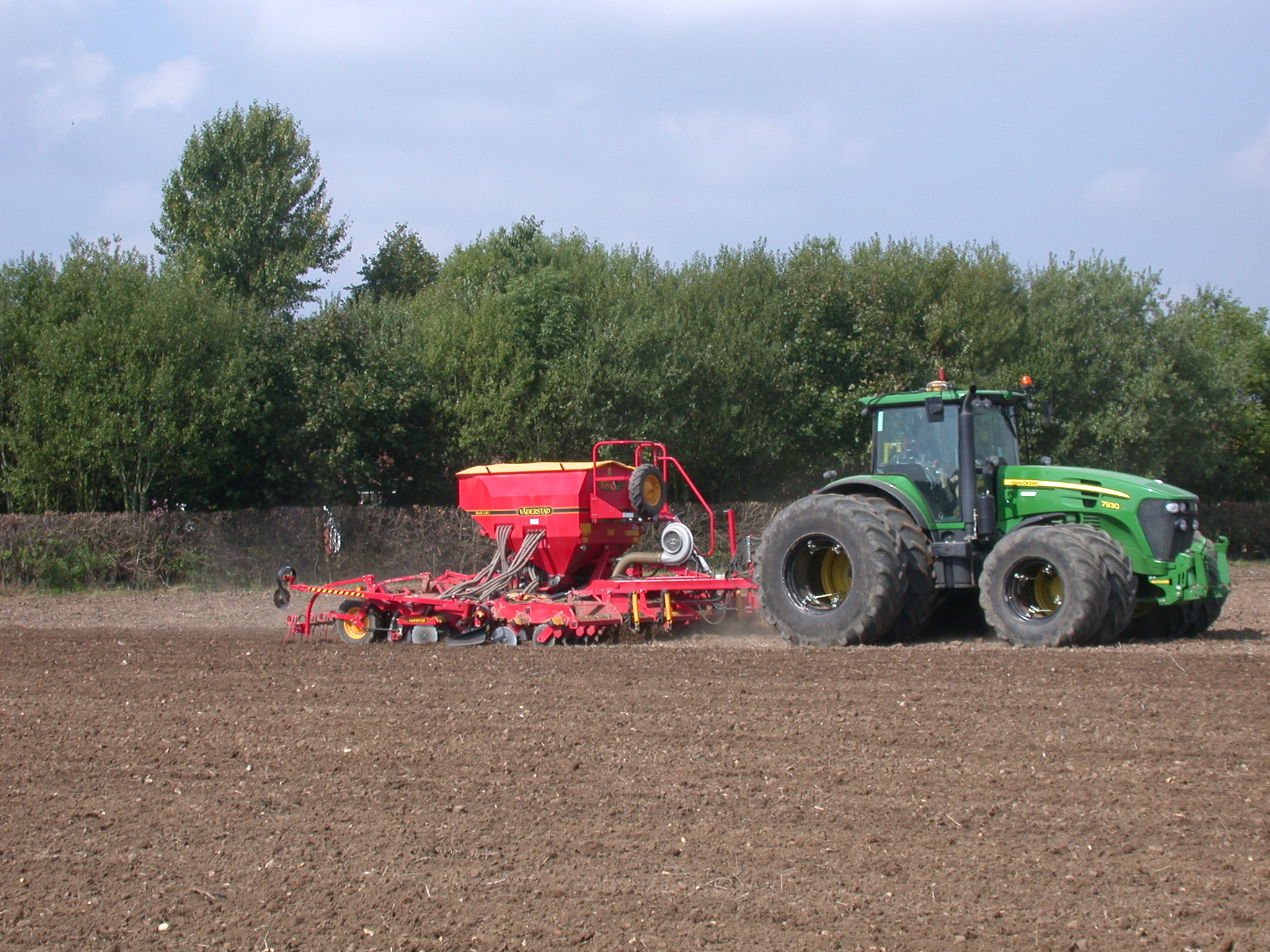
Tag: oilseed rape

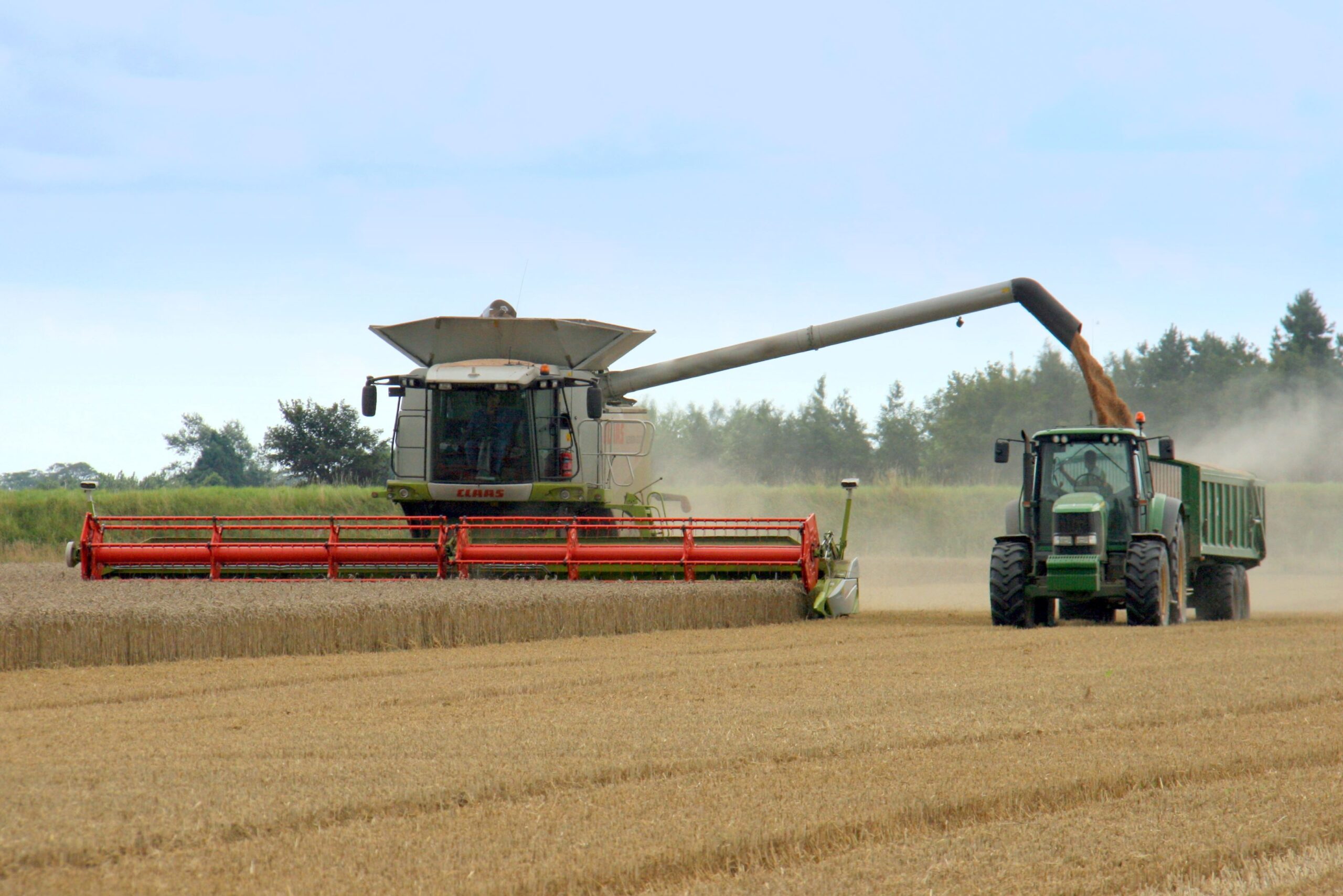
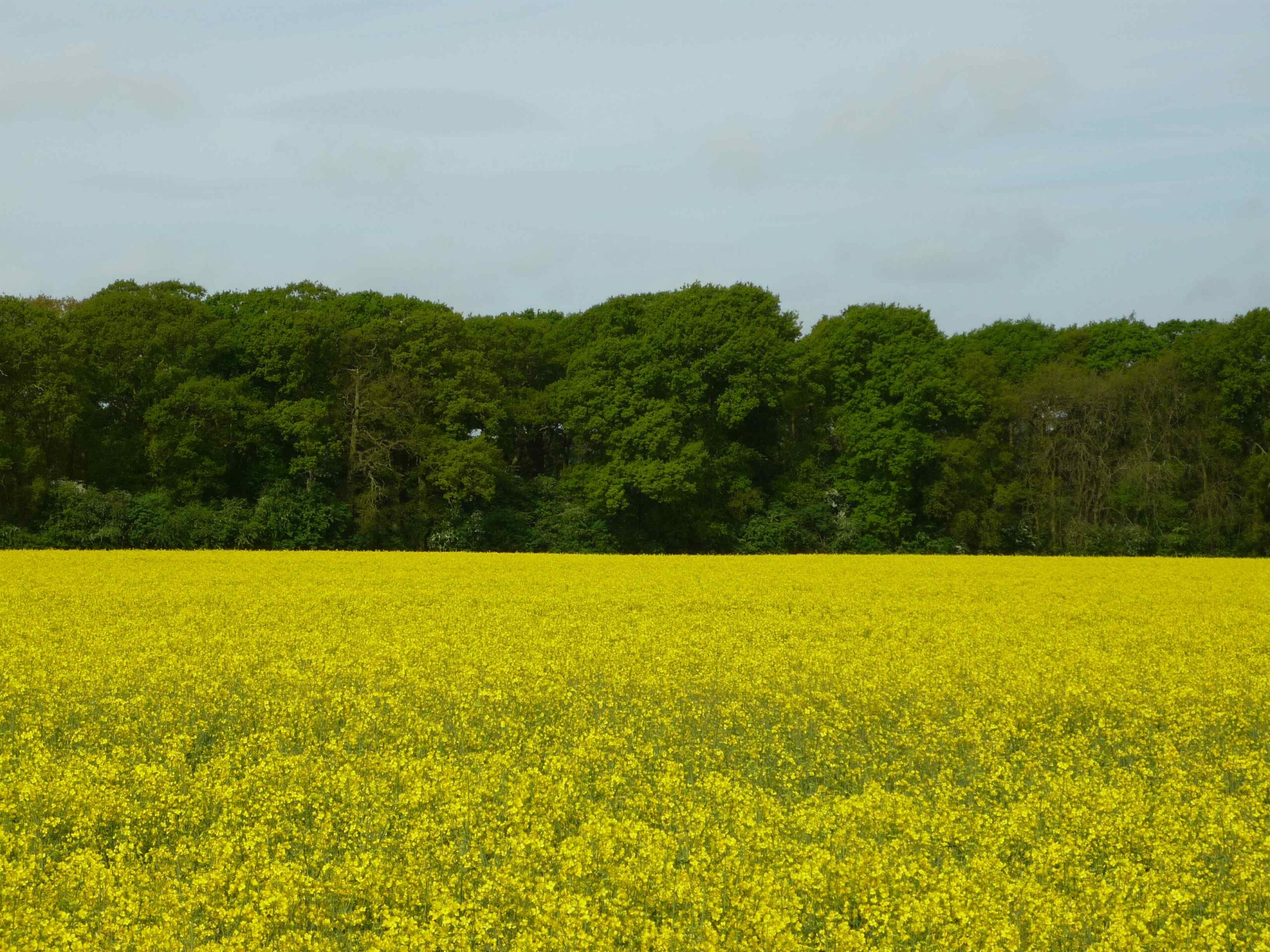
Grain Market Update
The 2024 harvest of wheat in the UK has been pegged at 11.1 million tonnes. This is down 20% from the 2019-2023 average of 13.9 million tonnes. This overall production figure masks regional variability in both planted area and yields for 2024. The wet weather that plagued last year’s crop will have wide-ranging implications across regions and individual farms. Cashflow of some businesses is likely to be challenged with less tonnage available to be sold and ex-farm feed wheat prices only £6 per tonne higher than October 2023, at £183 per tonne.
The cumulative effects of last season’s rainfall and the wet autumn this year are driving concerns about the 2025 crop. Met Office data for September suggests that much of England received 200% of the 1991-2020 average rainfall for the month.
The wet weather of last season and this has led some to alter establishment for this year, dusting the cobwebs off the plough, and hitching up the tine drill in an effort to avoid a repeat of last year.
There is some reflection of expectations of a reduction in wheat output in 2025 in global grain pricing. At the end of October, the value of new crop (November 2025) UK feed wheat futures was around £12 per tonne higher than nearby futures. The cumulative impact of a tighter supply and demand of global grains in 2024/25 and challenging establishment for 2025/26 offer an opportunity for growers to lock in an early price around the £185-190 per tonne mark for feed wheat, depending on location.
Elsewhere in the world, dryness appears to be the primary concern. There are challenges for establishment of winter wheat in Russia. Lack of rain in the US is advantageous for the maize and soyabean harvests which are well ahead of average pace. That said, it could check the progress of wheat planting and development.
Rapeseed prices are well ahead of year-ago levels, averaging almost £390 per tonne ex-farm across October. Rapeseed production was down significantly in the UK, EU, and Ukraine in 2024. Furthermore, expectations are for a smaller rapeseed area again in the UK for harvest 2025. However, with a plentiful soyabean crop in the US and Brazil, strong availability of soyabean oil could partly erode the premium that rapeseed currently has.
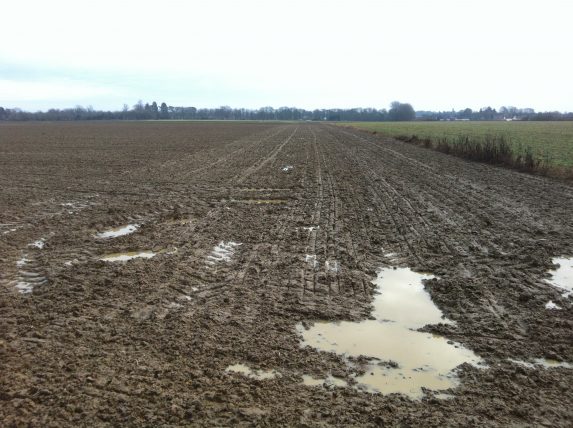
Combinable Crop Market Outlook
Global Position
With results from the Northern Hemisphere harvest (which accounts for about 80% of the global grains harvest) now becoming available, forecasts of global grain supply and demand are being refined with some actuals. The latest figures from the International Grains Council (IGC) are presented in the table below for the new 2024/25 marketing year (2024 harvest), alongside the last month’s figures.
| World Grain Supply and Demand – source: IGC | |||||
| Marketing Year –
UK harvest – |
21/22
2021 |
22/23
2022 |
23/24
2023 |
24/25 (2024)
Aug Sept |
|
| m tonnes | WHEAT | ||||
| Production | 780 | 804 | 795 | 799 | 798 |
| Usage | 784 | 794 | 807 | 803 | 803 |
| End Stocks | 274 | 284 | 272 | 266 | 267 |
| Stocks/Use Ratio | 34.9% | 35.8% | 33.7% | 33.1% | 33.3% |
| Stocks: Main Exporters | 62 | 70 | 63 | 59 | 61 |
| m tonnes | MAIZE (CORN) | ||||
| Production | 1,222 | 1,163 | 1,227 | 1,226 | 1,224 |
| Usage | 1,213 | 1184 | 1,223 | 1,229 | 1,230 |
| End Stocks | 298 | 277 | 281 | 277 | 276 |
| Stocks/Use Ratio | 24.6% | 23.4% | 23.0% | 22.5% | 22.4% |
| Stocks: Main Exporters | 56 | 47 | 54 | 58 | 57 |
| m tonnes | SOYABEANS | ||||
| Production | 357 | 376 | 393 | 419 | 419 |
| Usage | 360 | 369 | 385 | 406 | 406 |
| End Stocks | 54 | 61 | 69 | 82 | 82 |
| Stocks/Use Ratio | 15.0% | 16.5% | 17.9% | 20.2% | 20.2% |
| Stocks: Main Exporters | 18 | 16 | 19 | 29 | 28 |
| 22/23 figures estimates; 23/24 forecasts Argentina, Australia, Canada, EU, Kazakhstan, Russia, Ukraine, US Argentina, Brazil, Ukraine, US Argentina, Brazil, US | |||||
It shows that the total wheat and maize production estimates are not changing vastly overall as the various nations’ harvest figures are counted up. However, within the figures, the European crop is declining and the US, Australian and South American crops are being revised upwards. This makes marginal overall change but advantages the European markets with additional surpluses further away from our markets; making them dearer to ship to here. Meanwhile, soybeans have not changed month on month.
Total global grain production estimates now sit at 2,315 million tonnes, or 2.3 billion tonnes. This is the largest crop the world has ever produced. We should not be surprised or impressed with records, as demand rises annually with more mouths to feed and ever-hungrier consumers. Despite harvesting more than ever before, stock levels are likely to decline this year as consumption rises have outstripped production increases. Yet, the ability of our industry to provide sufficient should year-on-year should offer food for thought for those expecting imminent mass starvation because of resource loss. It might happen, but it is clearly not inevitable.
Domestic Situation
The combinable harvest 2024 is now all-but complete in the UK – apart from some areas in the far north, and some later-harvested spring crops including beans and linseed. Harvest progress has slowed in the last week, with the heavy rain having hampered growers’ combining.
Overall yields for winter cereals and oilseeds are lower than average – but, it appears, by less than most people anticipated back in, say, March. Nature, once again has compensated remarkably well since the appalling winter weather; of course with the help of agronomists and farmers. Harvest performance, in terms of yield and quality variation is inevitable each year, but this year, the ranges in both are unsurprisingly greater than usual. Spring crops have faired better, with both yield and quality, especially in the North of England and Scotland. Some spring crops such as spring malting barley are likely to be the best performing combinable crops financially this year on many farms.
The unexpected and extreme weather conditions will have disadvantaged some farmers more than others, meaning those who usually excel may not stand out from the crowd this year, and indeed, bank managers and farm advisors might see cash issues with farms that are usually very safe, whilst others are relatively unaffected.
Over the last 31 days, the November 2024 (new-crop) wheat futures contract has fallen by £5 per tonne, and is now close to its contract low set in March. This is despite a rise since then of £47 per tonne, followed to a £45 fall. Previous Editions of this Bulletin have reminded the reader that prices of grains in the UK are not set by local supply and demand, having such a small proportion of the global production and trade. Having a small UK crop is not a very bullish factor on the scale of things. Whilst the 2024 crop price has swung so much since spring, the value of 2025 wheat has shifted far less, being £2 per tonne dearer when prices fell, the £12 per tonne cheaper when they rose. It is now back to carrying a £14.40 premium over 2024 crop prices.
Feed barley has outperformed feed wheat this month, with its discount now smaller than it was at the end of August. However, it is now dear on a global basis which suggests lack of exports might soon curtail additional price rises, especially as the UK does have an exportable surplus. Demand has picked up by compounders and pushed more value into barley than wheat. Malting barley premiums are slimming as it emerges the harvest, especially in Scotland is better than previously expected – being a smaller and more domestic market, the malting barley market is more localised than wheat.
Half of the combinable pulses are still in the field and may have been affected by the recent very heavy rains. Samples from other countries are showing insect damage, so potentially leaving opportunities for our pulses if they are clean and bright. It may be prudent to reflect on marketing them before the Australian harvest arrives in the New Year, which is likely to be clean.

Grain Market Update
Like the water sat on many headlands around the country, old crop wheat markets could rightly be described as stagnant!
Looking back across the May-23 UK feed wheat futures market, prices have been stuck in a channel from £194 to £204 per tonne since the beginning of September. Prices are sitting in the bottom of that band presently and showing little sign of moving back towards the top. This is partly driven by readily available Black Sea grain, keeping prices pressured.
The old crop market is also influenced by a large global maize crop, with the US harvest all but complete. In November, the USDA added a further four million tonnes to its production forecast for the US, citing improved yields. In total a further 2.5 million tonnes have been added to global maize ending stocks, compared to October’s forecast. Ending stocks of maize, globally, are up 15 million tonnes year-on-year.
The new crop market is more interesting, unless you are looking out on waterlogged crops. Poor weather conditions have led to estimates of a 5-10% decline in wheat area across the UK, France, Germany, and Ukraine (Openfield). This is driving an £11 per tonne premium for November 2024, over current May prices. Concerns are built into new crop pricing. It will take a worsening of conditions to keep prices supported.
In the UK, grain markets are lacking activity. There are reports of weaker demand for bioethanol production. UK wheat prices are uncompetitive in export markets and prices are under pressure (see Key Farm Facts). Milling premiums remain elevated.
Feed barley is at a more than £20 per tonne discount to feed wheat. However inclusions in animal feed rations are already high. As such, barley prices need to be competitive into export markets to generate extra sales. Old crop malting barley premiums remain high. With concern over winter wheat plantings, and a subsequent increase in spring barley plantings likely, new crop premiums may be lower.
Oilseed rape prices are benefitting from uncertainty over planting of soyabeans in South America. The north of Brazil remains very dry, while planting progress in the south of Brazil has been delayed by heavy rains. The pace has improved towards the end of November but remains behind average. While this is supporting oilseeds now, it could also hinder the maize plantings which follow soyabeans in spring, offering future support to grains.

Crop Conditions Update
It has been a challenging start to the 2024 season for many, to say the least. Persistent rain during and post-harvest has been followed by storms Babet, Ciarán and Debi, leading to some crop casualties already. For many, this year has marked the most significant challenge to the drilling campaign since 2019, although rainfall has largely been less persistent.
Andersons has compiled a crop condition assessment for the AHDB, summarised below in the order of planting.
Winter Oilseed Rape
Generally, the winter OSR crop can be split into three groups according to when it was planted. The earliest established crop is generally in good condition, having rooted into good moisture and developed well to stave-off pest pressure and subsequent rains. If anything, some of these crops are too far forward.
Crops established around the August Bank Holiday went into drier seedbeds, owing to the one week of very hot weather this year. These crops are in far worse condition, with cabbage stem flea beetle migrating at a similar time. Slugs have also been a significant issue, with mild evenings and wet weather. Many regions have already written off considerable areas.
The final group is the late-August/early September crop. This has generally established well, although root development was hampered by colder conditions and the crop isn’t as far forward as it should be. It remains to be seen how these crops get through the winter given some of thier poor rooting.
Generally, more OSR will be written off this season than normal. In addition, CSFB pressures are being seen further North and West than in a typical season.
Winter Barley
The winter barley crop was generally looking good, up until recent rainfall, having been established in reasonable conditions. That said, with some crops sitting in water-logged soils, yellowing has been seen. Crops should recover, although if biomass development is hindered,yield prospects may be too.
Given the moisture this autumn, good, stale seedbeds and weed control were achievable for many. Hopefully this will result in lower grass weed pressure than last year.
Winter Wheat
Wheat is undoubtedly the crop of biggest concern. Whilst the AHDB Early Bird Survey estimates a planted area of 1.698 million hectares, much of this will have been either undrilled or not very well established by the time the rains hit in October and November. Typically, by the end of October we would expect much of the winter wheat crop to be planted. Regional estimates of planting vary from 70% to 85% on average.
Concern over the potential for crop failure is reported across many regions by businesses of all sizes. Some of the worse hit wheat is in the Midlands and the North East, where there is expected to be a degree of write-off. What this crop is replaced with remains to be seen and will depend on how much of a field is written off. Where headlands and wetter patches are affected, there may be an effort to re-establish wheat. Failing that, a rise in fallow, or generally thinner, patchy, low-yielding crops are to be expected.
Pest pressure for wheat has also been considerable, with reports of the worst slug damage some have seen for 10 or more years.

Grain Market Update
The August USDA World Supply and Demand Estimates forecast a slight drop in production relative to the July report. This is driven by a reduced outlook for Canadian and European wheat production. Additionally, US maize production forecasts were reduced slightly with lower yields expected, following results from a producer survey. The sentiment for reducing supply and demand forecasts (month-on-month) is echoed by the International Grains Council who cut both production and stock forecasts for total grains.
Although estimates have been reduced, this years global harvest is forecast to be considerably larger than last years, putting downwards pressure on prices. As harvests continue across the Northern Hemisphere, and better yield information becomes available, wheat prices have continued to fall. Suggestions of large crops in Russia, and the ease of shipping costs compared to the same time last year has moved spot feed wheat prices lower after the late July spike.
In the UK, the changeable weather continues to result in a challenging, stop-start harvest, although progress improved at the end of August. In the South and East, many businesses have now finished harvest for another year. Reports suggest that both yield and quality are down on last year, with lower proteins and hagbergs a potential challenge for the milling supply chain. Malting barley nitrogens are low, a positive; but bushel weights are also low.
In August, UK feed wheat values average just over £174 per tonne, down £4 per tonne on the July average. Milling wheat values have also moved lower, down nearly £5 per tonne on the July average, at £237 per tonne. There is still a considerable premium of milling wheat over feed (£62 per tonne) which will be supported if quality issues turn out to be correct..
The discount of feed barley to feed wheat has narrowed over the past month. Reduced availability of the crop has pushed the discount to £22 per tonne on average across August, compared with £28 per tonne in July. In the last week of August the discount was as narrow as £17 per tonne.
The supply and demand for oilseeds has also eroded prices this month. There is larger availability of oilseed rape in Europe this season, with expectations of significant carryover into the 2024/25 season. The oilseed rape price averaged £349 per tonne in August, down from £362 per tonne in July.
The value of pulse crops has taken the biggest hit over the last month. The price of feed beans and feed peas fell by £37 and £41 per tonne, respectively, mont-on-month. With harvest underway greater availability. Early reports suggested that quality has been variable.
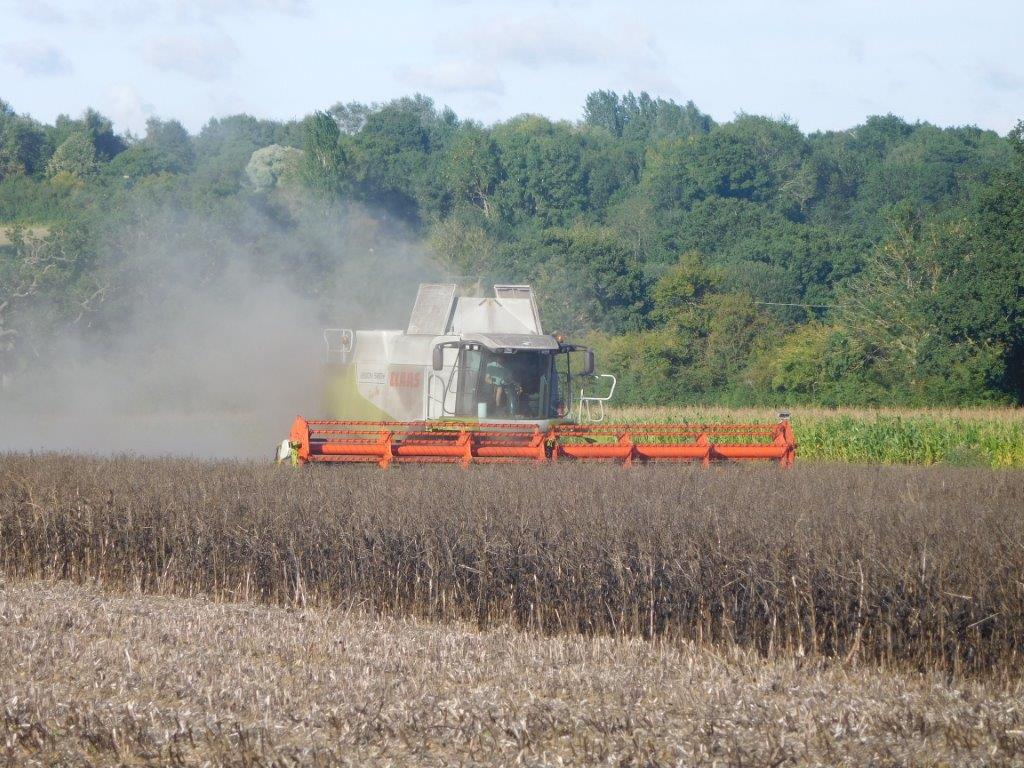
UK Grain Markets
The barley harvest is underway in England, although progress has been stop-start due to regular rain. According to the Environment Agency, in the month to 18th July, England had received 111% of the long-term average rainfall for July. As well as increased lodging in barley and OSR, the higher rainfall will be causing some concerns around grain quality.
With large ending stocks from the 2022/23 season anticipated, and the UK not currently export competitive, the price of feed barley has continued to fall. So far in July (to 21st July) feed barley has averaged £146 per tonne, down £10 per tonne on the June average. Initial assessments of malting crop quality have seen lower retentions (percentage of sample retained when passing over a 2.5mm sieve – minimum typically 85-90%) . This has reportedly led some maltsters to lower intake standards for the current crop.
Feed wheat prices have increased latterly, due to the ending of the Black Sea Grain Initiative. Ex-farm feed wheat (nearby) was quoted at £180 per tonne, on 21st July. Milling wheat was worth £243 per tonne.
Oilseed rape values have also increased, with Paris rapeseed futures briefly exceeding €500 per tonne for the first time since March. Ex-farm oilseed rape was quoted, on 21st July; at £385 per tonne, up from an average of £330 per tonne in June. Price increases have been driven by the tightening of soyabean markets, and concerns over availability of Ukrainian oilseeds.
Pulse markets were also stronger in July. Human consumption demand has remained somewhat limited, with difficulties in accessing North African markets. However, some feed compounders have reportedly included pulses in rations, with global protein values increasing. Feed beans and feed peas have average £259 per tonne in July.

UK Arable Outlook
As harvest draws nearer, UK wheat prices have increased, supported by concerns for US maize and prolonged dryness in Northern Europe (see preceding article). In the week ending 23rd June 2023, ex-farm feed wheat was quoted at £175 per tonne; up almost £15 per tonne on the beginning of the month, but still just behind the May average of £176 per tonne.
AHDB Corn Returns data shows a positive carry into new crop prices, with feed wheat for September delivery averaging £196 per tonne in the week ending 22nd June. Milling wheat continues to command a strong premium of nearly £66 per tonne, with the price quoted at £241 per tonne, ex-farm.
Barley prices have not gained to the same degree as wheat prices, up £8 per tonne on the beginning of June. Ex-farm barley is quoted at £156 per tonne – demand for old crop feed barley has increased slightly but remains slow. The UK is currently not competitive into export markets. This could continue to pressure prices with a large carryout expected from harvest 2022, and barley now ripening and harvest not far away in the South and East.
Oilseed rape values had strengthened through June, reaching £346 per tonne in the middle of the month, before falling again. Weaker than expected biofuel mandates in the US pressured soyabean oil prices, dragging the wider vegetable oils complex lower. Subsequently, ex-farm oilseed rape was quoted at £326 per tonne on 23rd June.
Pulse prices picked up during the month with some renewed demand, but selling reportedly remained limited. Both feed beans and feed peas were quoted at £241 per tonne, on 23rd June.
